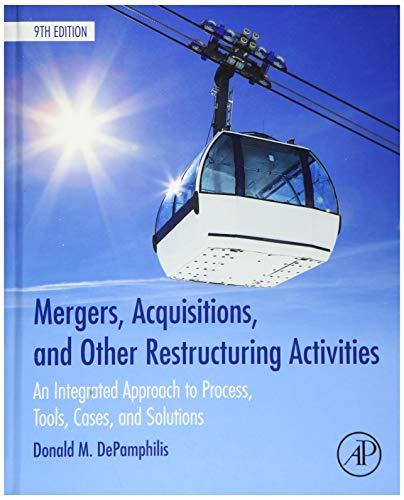Siebel Incorporated, a nonpublicly traded company, has 2009 after-tax earnings of $20 million, which are expected to
Question:
a. What is the value of Siebel using the DCF method?
b. What is the value using the comparable recent transactions method?
c. What will be the value of the firm if we combine the results of both methods?
Stocks
Stocks or shares are generally equity instruments that provide the largest source of raising funds in any public or private listed company's. The instruments are issued on a stock exchange from where a large number of general public who are willing...
Fantastic news! We've Found the answer you've been seeking!
Step by Step Answer:
Related Book For 

Mergers Acquisitions And Other Restructuring Activities
ISBN: 9780128016091
9th Edition
Authors: Donald DePamphilis
Question Posted:





